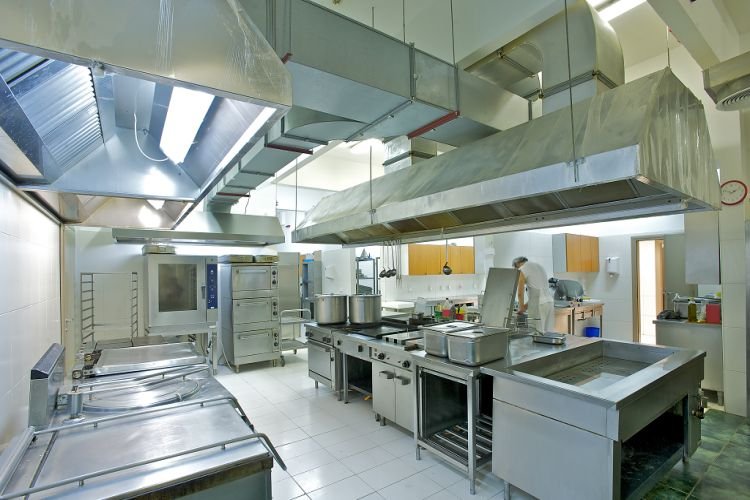 With all of the activity in a professional kitchen, it’s critical to keep appliances clean and maintained on a frequent basis. While servicing fryers and burners may be at the peak of your agenda, kitchen hoods are frequently overlooked.
With all of the activity in a professional kitchen, it’s critical to keep appliances clean and maintained on a frequent basis. While servicing fryers and burners may be at the peak of your agenda, kitchen hoods are frequently overlooked.
A stove hood, also described as a vent hood, aids in the removal of airborne oils, fumes, and aromas emitted by industrial ranges, cookers, and other machinery. As a consequence, they attract a bunch of dirt and dust. When oil and other impurities accumulate in the ventilation covers and ducts, it can limit airflow in your area. The cleaning instructions for a commercial range hood provided below will help maintain your business kitchen clean and safe.
How does a restaurant kitchen hood work?
There are four main sections to most dryer vent systems. Here’s an explanation of whatever these are & how they do it.
- Filters: All those are metal or grid attachments that bridge the ducting aperture and prevent dust from blowing into the turbines.
- Fans: Several or maybe more motorized fans are located behind the cleaners, sucking air up into the ducting then out from the complex.
- Grease traps: As dirt and smoke-filled gas rushes through the exhaust line, it gathers mostly on the ductwork’s surface and drops backward. Small pans inside that lip of the ducting capture the dirt. They’re known called grease traps.
- Ductwork: The ducting is the whole channel that collects airflow via the splayed entrance and transports it upwards. The purifiers, blowers, and grease catchers are all located within the ducting.
Cleaning the restaurant hood:
Disconnect the equipment and allow it to cool prior to proceeding. When nobody is preparing food, try to wash thoroughly after 4 to 6 weeks. Covers or plastic should be used to protect the adjacent equipment and utensils.
Cleaning the filters:
Regardless of if you use baffle, net, or carbon purifiers, they all will be easy to lift up and off. Discard any steel separators that are above or around the grease catchers after you have removed the frames. To clean your filters, apply non-abrasive scrubbing rags or a gentle scrub. You may then put them in the cleaner unless they’re not especially unclean or huge.
However, if the filters are plastered in filth or are large, you’ll have to flood a basin using water and cleanser concentration. After that, immerse your purifiers and separators in freshwater for at least three hours. Many companies wash them overnight.
Cleaning grease trap:
You’ll remove the grease traps once you’ve removed the screens and separators. There must be catches on either end of the cover. Take them out, being cautious not to leak any remaining grease. Use non-abrasive scrubbing insoles or soft-bristled rags to clean the traps.
Cleaning fans:
It’s time to take down the blowers or the turbine razors. A dual-motor & dual setup is common in low-profile covers. It gathers air from all angles of the cover to provide balanced airflow transmission. Wipe your blades using a wire cleaner or a non-abrasive cleaning pad. If they’re very terrible, throw those in with both screens and catches in the washing solution.
Cleaning duct:
Make a cleanser mixture with the same volume as the one in your faucet, but store it in a tiny sanitizing container this time. Clean the inside and outside of the uncovered range hood using a similar non-abrasive cleaning cloth or soft cloth.
Thoroughly rinse anything that has been washed and drenched. First, reinstall the blowers. When changing turbines in this same dual system, keep in mind that they are directional. They can’t be switched. The left piece should return towards the left end, and the other one should return to right.
Replace the grease catches, separators, and filters following replacing the fans. Take the plastic covering that has been placed around you and clean the floors.
Final thoughts:
Can you clean your own restaurant hood? You very certainly can. Cleaning the whole duct system, on the other hand, is significantly more difficult. To handle the ductwork that runs up and through the ceiling and out of the building, you’ll most likely need to hire restaurant hood cleaning services Portland. Typically, they will steam clean your restaurant hoods as well as the remainder of the ducting.




